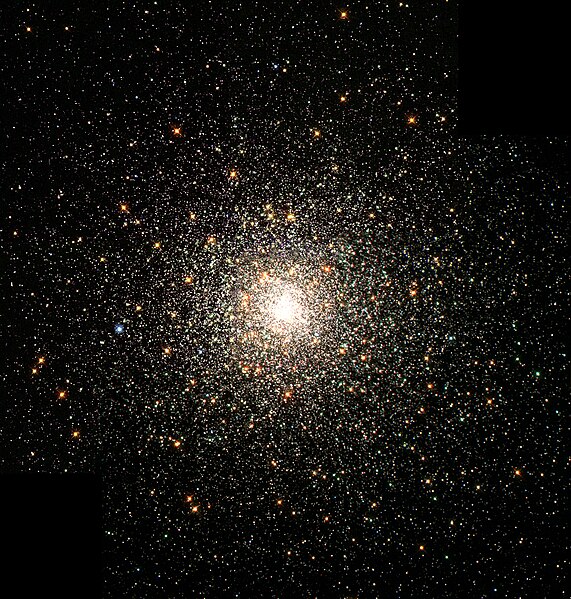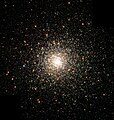Tugna:A Swarm of Ancient Stars - GPN-2000-000930.jpg

Tiddi n azaraskan agi : 571 × 599 iferdisen n tugna. Tibuda nniḍen : 229 × 240 iferdisen n tugna | 458 × 480 iferdisen n tugna | 732 × 768 iferdisen n tugna | 976 × 1 024 iferdisen n tugna | 1 777 × 1 864 iferdisen n tugna.
Afaylu aneṣli (1 777 × 1 864 pixel, tiddi n ufaylu: 4,03 MB/MO, anaw n MIME: image/jpeg)
Amazray n ufaylu
Senned ɣef yiwen azmez d usrag iwakken ad ẓṛeḍ afaylu aken yella deg imir nni.
| Azemz/Ssaɛa | Aqmamaḍ | Iseggiwen | Amseqdac | Awennit | |
|---|---|---|---|---|---|
| Lux a | 4 Meɣres 2010 à 14:08 |  | 1 777 × 1 864 (4,03 MB/MO) | Tryphon | From original source http://hubblesite.org/newscenter/archive/releases/1999/26/image/a/ (http://imgsrc.hubblesite.org/hu/db/images/hs-1999-26-a-full_jpg.jpg). |
| 9 Yebrir 2009 à 00:54 |  | 1 777 × 1 864 (3,98 MB/MO) | BotMultichillT | {{Information |Description={{en|1=This stellar swarm is M80 (NGC 6093), one of the densest of the 147 known globular star clusters in the Milky Way galaxy. Located about 28,000 light-years from Earth, M80 contains hundreds of thousands of stars, all held |
Aseqdec n ufaylu
2 isebtaren agi teseqdacen afaylu agi :
Aseqdec n ufaylu amatu
Iwikiyen-agi-nniḍen seqdacen afaylu-agi:
- Aseqdec ɣef af.wikipedia.org
- Aseqdec ɣef am.wikipedia.org
- Aseqdec ɣef ar.wikipedia.org
- Aseqdec ɣef ast.wikipedia.org
- Aseqdec ɣef az.wikipedia.org
- Aseqdec ɣef be-tarask.wikipedia.org
- Aseqdec ɣef be.wikipedia.org
- Aseqdec ɣef bg.wikipedia.org
- Aseqdec ɣef bn.wikipedia.org
- Aseqdec ɣef br.wikipedia.org
- Aseqdec ɣef bs.wikipedia.org
- Aseqdec ɣef ca.wikipedia.org
- Aseqdec ɣef ce.wikipedia.org
- Aseqdec ɣef ckb.wikipedia.org
- Aseqdec ɣef co.wikipedia.org
- Aseqdec ɣef cs.wikipedia.org
Wali l’utilisation globale n ufaylu-agi.

